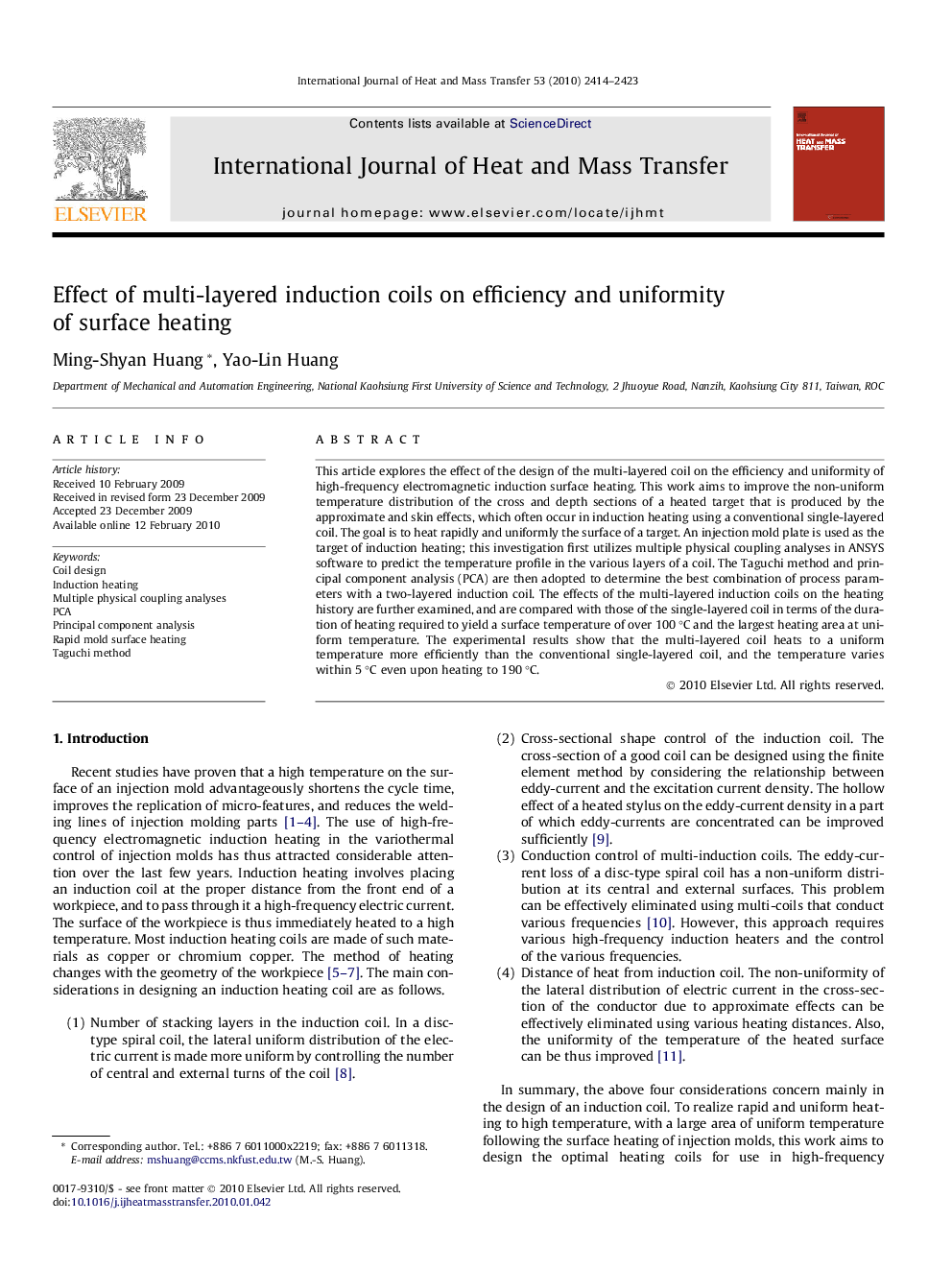| Article ID | Journal | Published Year | Pages | File Type |
|---|---|---|---|---|
| 660931 | International Journal of Heat and Mass Transfer | 2010 | 10 Pages |
Abstract
This article explores the effect of the design of the multi-layered coil on the efficiency and uniformity of high-frequency electromagnetic induction surface heating. This work aims to improve the non-uniform temperature distribution of the cross and depth sections of a heated target that is produced by the approximate and skin effects, which often occur in induction heating using a conventional single-layered coil. The goal is to heat rapidly and uniformly the surface of a target. An injection mold plate is used as the target of induction heating; this investigation first utilizes multiple physical coupling analyses in ANSYS software to predict the temperature profile in the various layers of a coil. The Taguchi method and principal component analysis (PCA) are then adopted to determine the best combination of process parameters with a two-layered induction coil. The effects of the multi-layered induction coils on the heating history are further examined, and are compared with those of the single-layered coil in terms of the duration of heating required to yield a surface temperature of over 100 °C and the largest heating area at uniform temperature. The experimental results show that the multi-layered coil heats to a uniform temperature more efficiently than the conventional single-layered coil, and the temperature varies within 5 °C even upon heating to 190 °C.
Related Topics
Physical Sciences and Engineering
Chemical Engineering
Fluid Flow and Transfer Processes
Authors
Ming-Shyan Huang, Yao-Lin Huang,
